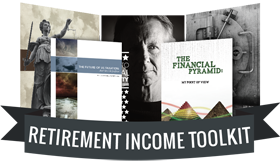by Jeremy Bryan, CFA
Investors would be forgiven for being a little confused at stock and bond markets this year. There are many conflicting signals that, when combined with the very recent and exceedingly difficult experience of 2022, can give investors a sense that it is far worse than the actual stock and bond performance would indicate.
The US economy currently is near 50 year lows of unemployment but there are increased discussions about layoffs and pauses in hiring. Inflation, while still elevated, is coming down in certain areas but is frustratingly persistent for consumers in areas such as food and travel. The most recent GDP report reflected continued growth of the US economy, but the degree of growth is slowing and leading economic indicators are reflecting worsening conditions.
Businesses are also providing conflicting data. Corporate earnings trends have been better than expected during March and forward outlooks have been resilient with no evidence of significant decline. On the other side, we have now experienced the collapse of three relatively large US banks which has elevated concerns for depositors as well as the need for financial companies to better understand their investment and lending risks.
With these conflicting signals, investors could expect that markets have been volatile and potentially in negative territory. Even market volatility gives conflicting signals depending on the asset class. Year to date, the S&P 500 is well into positive territory and stock market volatility has been relatively low since March. On the other side, bonds are in positive territory year to date, but bond rates have been more volatile than at any time since 2008 and the yield curve is inverted (a widely viewed signal of future recession).
During times of confusion, it can be tempting to avoid risk and wait for more clarity. While the temptation is real and the avoidance of risk can feel good in the short term, investing to achieve goals means focusing on long term objectives over short term comfort.
There are always concerns for investors – and when one concern is resolved it usually just leads to a new critical issue to fret over. Over the last 5 years, investors have had to weather the storm of highly contested elections, the beginnings of new wars, a global pandemic that severely affected the world economy, a significant bout of inflation, rapidly rising interest rates, and the threat of a potential global recession. During those same 5 years, the S&P 500 has provided an annualized return of over 10%.
It can be tempting to try to time investing based on reactions to these concerns. In our experience, these actions usually hurt more than help long term performance. It is quite easy to say, “buy low, sell high.” Buying low, however, typically involves purchasing when it feels extremely uncomfortable to do so. Selling high usually means reducing exposure during times of high optimism where it feels like everyone is getting rich. In theory, these are easy actions to undertake. In real life, this practice is extremely difficult.
This is the main reason we advocate for planning based on your goals and not solely on a market forecast. By allocating to both safety and growth assets that fit your personal risk tolerance and the objectives for your money, it can be easier to avoid the pitfalls of reacting based on emotion.

To expand on these Market Commentaries or to discuss any of our investment portfolios, please do not hesitate to reach out to us at 775-674-2222.




